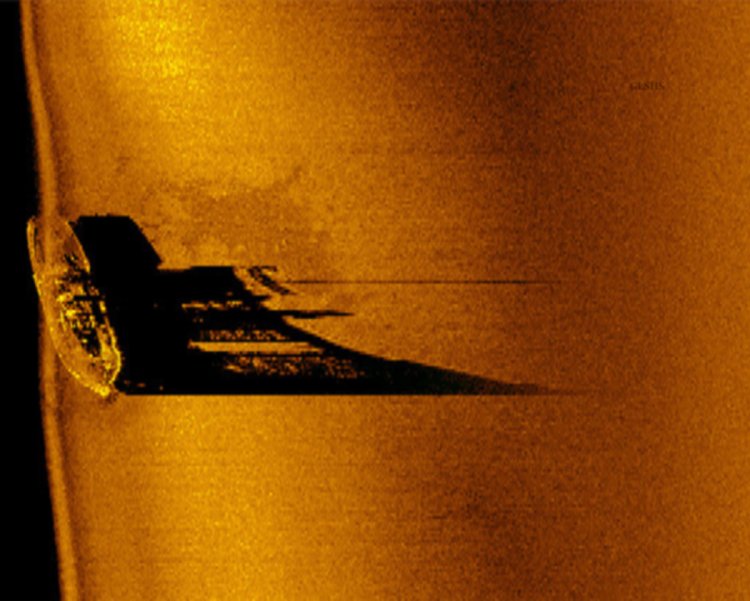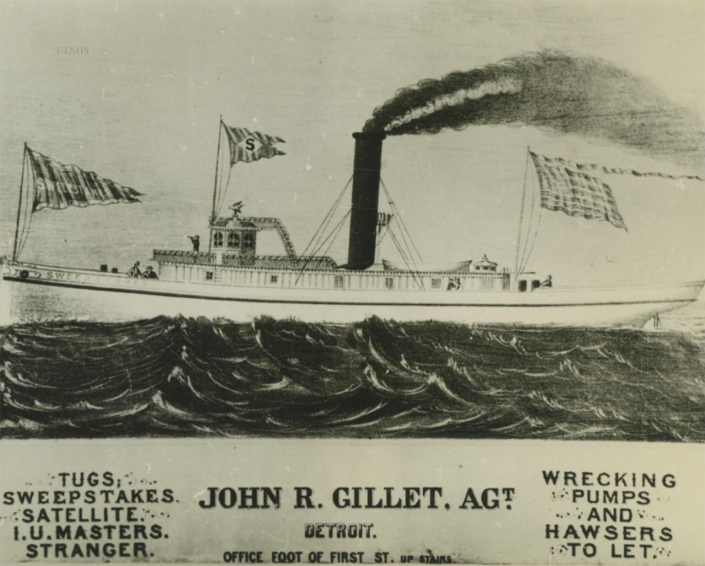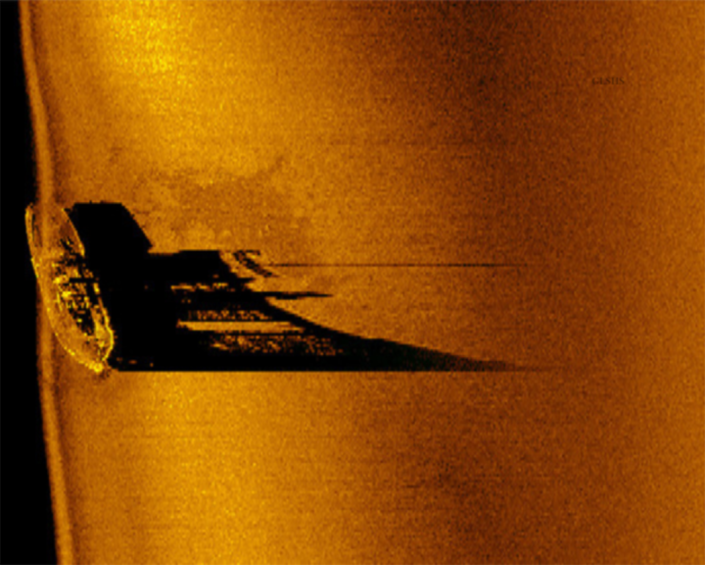1879 Lake Superior shipwreck accidentally discovered by Discovery Channel TV series
In seeking to solve one shipwreck mystery, underwater explorers happened upon another.The quest — which unfolded on the Discovery Channel's "Expedition Unknown," a reality TV series — starts with the adventure show host, Josh Gates, paddling in a bright yellow kayak through the Soo Locks as he looks for World War I-era French warships lost in the Great Lakes, the Inkerman and Cerisoles.They are two of three French minesweepers that were built in Canada's port city of Thunder Bay, Gates said, and were headed together through the Great Lakes to the Atlantic and then Europe. Instead, in a 1918 storm, they sank, taking the lives of nearly 80 mariners and creating one of the greatest vanishing ship mysteries ever.Gates — who worked with the Great Lakes Shipwreck Historical Society — didn't find the French vessels.The Satellite sank on June 21, 1879, in Lake Superior, never to be seen again until recently when its image came back from a remotely operated underwater camera.But he did uncover

In seeking to solve one shipwreck mystery, underwater explorers happened upon another.
The quest — which unfolded on the Discovery Channel's "Expedition Unknown," a reality TV series — starts with the adventure show host, Josh Gates, paddling in a bright yellow kayak through the Soo Locks as he looks for World War I-era French warships lost in the Great Lakes, the Inkerman and Cerisoles.
They are two of three French minesweepers that were built in Canada's port city of Thunder Bay, Gates said, and were headed together through the Great Lakes to the Atlantic and then Europe. Instead, in a 1918 storm, they sank, taking the lives of nearly 80 mariners and creating one of the greatest vanishing ship mysteries ever.
Gates — who worked with the Great Lakes Shipwreck Historical Society — didn't find the French vessels.


But he did uncover an even older ship, the long-missing tugboat, the Satellite, that sank June 21, 1879, nearly 40 years before the minesweepers. The Satellite was a find that the historical society said last week it was proud to announce.
The search also has thrust Michigan's shipwreck society — founded in 1978 by a group of divers, teachers and educators to explore shipwrecks — into the national spotlight, and when the TV show's June 21 episode debuted, it revealed a ship that no one alive had seen before.
Found History: Once lost, Lake Superior shipwrecks are found, giving 100-year-plus story a new ending
First, a Great Lakes history lesson
Gates — who styles himself as an "international adventurer" traveling "to the ends of the earth" looking into unsolved mysteries — explained during the fifth episode of the eleventh season of "Expedition Unknown" why the minesweepers were in the Great Lakes and why it matters.
During the first world war, Gates said, Germany was laying tens of thousands of mines in the English Channel and the French Navy was building minesweepers to destroy the deadly explosives. The last three of these ships headed to Europe, but two sank.
There was no wreckage.
This is where Gates turns to the Great Lakes Shipwreck Museum at Whitefish Point, where the historical society also is based. The museum's Executive Director Bruce Lynn told Gates the minesweepers were built in Canada, because the French shipbuilders were overwhelmed.
Maritime historian and author, Fred Stonehouse, who wrote about the baffling mystery of the steel-hulled minesweepers in his book, "Gone: The Greatest Shipwreck Mystery on the Great Lakes," concluded the ships went down in Lake Superior during a southerly gale.
Eighteen-foot waves swallowed the ships.
"A century of searches have proven fruitless," Gates said. But, he added, "investigators have found new leads."
One of those leads takes Gates down a dirt road on a four-wheeler to Deer Park, where he's looking for Jack Hubbard, a life-long Yooper, who has a story to tell.
Shipwreck Tourism: Edmund Fitzgerald shipwreck site in Lake Superior is protected, may be example for Titanic
New clue, new discovery
Hubbard, who called the lake an "angry witch," explained to Gates that in a storm, "all hell" can break loose.
He also told Gates that his great-grandfather told him that while walking the beach years ago, he saw the French warships and tried to signal them away from shore with lanterns. Gates wanted to know why Hubbard didn't tell more people about it before. Hubbard replied: No one asked him.
With the new information, Gates and the historical society went out onto the lake aboard the David Boyd, a research vessel, to try to find the minesweepers. With a sonar scan, they identified some places where the ships might be and sent a remote-operated vehicle with a camera in the water 300-or-so feet deep.
"Get out of here!" Gates said as the camera sends back images. "That's the back of a shipwreck!"


But it's the Satellite, not the Inkerman or Cerisoles.
There are no known pictures of the steam-powered Satellite. There is just a drawing of it. News accounts described the tug as quite a jewel. The Detroit Press and Tribune reported that the ship's "cabin and upper works were the most elaborate put upon a craft of her kind."
In one account of the how the Satellite went down, the historical society said, "suggests that she suffered a mechanical problem." Another account concludes it "struck a floating log and started taking on water." Either way, the Satellite went straight to the lake's bottom.
No one died, but the wooden vessel vanished for 142 years until it was found.
There are more than 6,000 shipwrecks, which have taken the lives of an estimated 30,000 mariners, in the Great Lakes. Of those, about 550 wrecks — most of which haven't been located, including the two French minesweepers — are preserved in Lake Superior's icy waters.
Contact Frank Witsil: 313-222-5022 or [email protected]
This article originally appeared on Detroit Free Press: 'Expedition Unknown': 1879 shipwreck mistakenly found in Lake Superior
What's Your Reaction?













